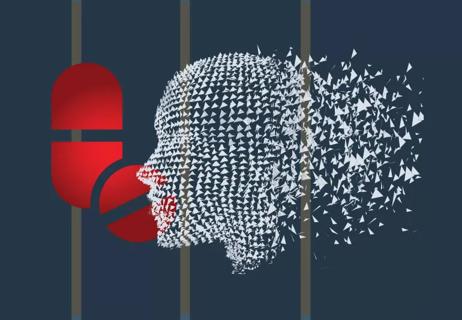Prevention and preparation can help you keep your loved one safe

There are few things scarier than a loved one going missing — especially when the individual in question is unable to fend for themselves. Caregivers of people with Alzheimer’s disease and dementia live with this fear day in and day out. It’s called wandering, and it’s a common manifestation of cognitive decline. Learn more about what wandering is, why it happens, how to prevent it — and what to do if it happens.
Advertisement
Cleveland Clinic is a non-profit academic medical center. Advertising on our site helps support our mission. We do not endorse non-Cleveland Clinic products or services. Policy
The definition of wandering varies from context to context. Technically, wandering is an umbrella term for several different behaviors. This includes elopement (attempts to escape), repetitive pacing and becoming lost. According to neurologist Jagan Pillai, MD, PhD, most of the caregivers he works with think about wandering in terms of the latter — when someone becomes lost outside of the home, without their knowledge.
However you define it, wandering is a serious concern. It tends to occur in moderate to advanced stages of Alzheimer’s disease. According to the Alzheimer’s Association, 60% of people living with the disease will wander at least once. Most individuals who wander, wander repeatedly.
As you can imagine, wandering is incredibly dangerous. In fact, of individuals who aren’t found within the first 24 hours of their departure, 50% end up either severely injured or dead. That’s why it’s so important to take action to prevent wandering, and implement a plan for recovering a loved one if they go missing.
It’s worth noting that Alzheimer’s isn’t the only condition that can cause wandering. It also occurs in other neurodegenerative diseases like Parkinson’s disease, specific forms of dementia like Lewy body dementia and developmental disorders like autism spectrum disorder (ASD). While the advice below focuses on Alzheimer’s, it might be worth a read for others, too.
Advertisement
According to Dr. Pillai, as Alzheimer’s disease progresses, certain abilities degrade, like sequential planning and keeping track of a daily routine.
“People with Alzheimer’s may not perceive the outside world in the same way anymore,” he explains. “The way they perceive colors and distances might change, too, so they’re not able to make judgments about how far apart things are, or how one object relates to another.”
This combination makes it difficult for the person with dementia to figure out where they are — and what to do next.
Many people who wander are motivated by a goal of some sort. Some of the common motivations include a need to escape from what one perceives as an unfamiliar or unsafe setting, a desire for social interaction or simple restlessness.
It’s often impossible to determine why an individual is wandering because, as Dr. Pillai notes, a combination of these things can happen all at once. He offers an example of going to get the newspaper.
“They’ve done that a zillion times in their life,” he explains, “but as the disease progresses, there will be a point where they pick up the newspaper, and suddenly the world doesn’t seem the way it used to seem. They get confused and they take a wrong turn.”
Something as simple as changing weather might be enough to disorient a person with dementia. As Alzheimer’s disease affects both memory and sequential planning, it’s hard to know what triggers the behavior.
If you have a loved one with an Alzheimer’s diagnosis, you’ve likely heard of a common phenomenon called sundowning. The term refers to a number of symptoms — like irritation, confusion, agitation and depression — worsening over the course of the day. While most people experience sundowning after the sun goes down, as the name suggests, it can actually happen at other times of day, too.
About 20% of all people with Alzheimer’s disease experience sundowning.
While it’s true that sundowning can prompt nighttime wandering, Dr. Pillai doesn’t see it as often among his patients as the literature would lead us to expect.
“Wandering typically means the person is breaching the threshold between their home and the elements,” he explains, “and people don’t usually go outside as much at night, although they might be wandering inside the house.”
That said, when people do have a wandering episode after dark, it’s extremely dangerous.
Wandering is a sign of disease progression, so it tends not to happen out of the blue. Your loved one may be at risk of wandering if they start:
Advertisement
If you notice these behaviors, it’s time to implement your wandering safety plan.
If you have children, you’ve probably sat down with them at some point to create a fire safety plan. It’s important to do the same thing for wandering. Having a wandering safety plan allows you and any other people involved in your loved one’s care to prepare for an emergency long before it happens. Here are some things to consider for your safety plan:
Advertisement
While you can’t stop people with Alzheimer’s from wandering, you can create an environment that discourages it. Here are some tips for managing wandering:
Advertisement
While it’s important to keep your loved one from wandering, remember to NEVER leave them in a locked house by themselves.
If you discover that a person with Alzheimer’s is missing, it’s important to act fast.
Within the first 15 minutes after learning your loved one is lost, do as many of the following steps as you can:
If after 15 minutes of searching, you’ve been unable to locate your loved one, you should call 911 and report the individual missing. The authorities can then determine whether or not to issue a Silver Alert.
A Silver Alert — similar to the Amber Alerts you receive following a child abduction — is specific to missing persons who have a cognitive disorder, mental disability or brain disorder. The alert notifies everyone within the locale, region or state to be on the lookout for the missing individual.
No matter how much you plan or how hard you work, taking care of a loved one with Alzheimer’s or dementia will never be easy. It’s an emotionally, mentally and physically taxing experience. Without proper support, you run the risk of burning out. That’s why part of being an effective caregiver is knowing when to seek help.
Dr. Pillai recommends caregiver support groups to his patients’ families, explaining that, “There’s a lot of value in talking to other people going through the same experience.” Support groups provide a space to process grief, release stress and learn healthy coping strategies.
Dr. Pillai also notes that talking to other caregivers in your area is a great way to learn “what strategies to prevent wandering work in the real world.” If you’re not comfortable attending a support group, consider joining an online forum.
Millions of people are living with Alzheimer’s disease around the world — and millions more are caring for them. Wandering is scary, yes, but it isn’t unique. Your loved one isn’t alone in this fight, and neither are you.
Learn more about our editorial process.
Advertisement

It’s critical to understand the wishes of your loved one and seek their involvement whenever possible

Your loved one may need help with daily activities, managing nutritional challenges and adapting their living space

Finding the causes of weight loss is key to treatment

Two-thirds of Americans with Alzheimer’s are women

This connection is yet another reason to seek help for OSA

Research on better diagnosis and treatment continues

The difference between normal aging and issues that affect your independence

Despite some disappointments, the pipeline isn't dry

Type 2 diabetes isn’t inevitable with these dietary changes

Applying a hot or cold compress can help with pain